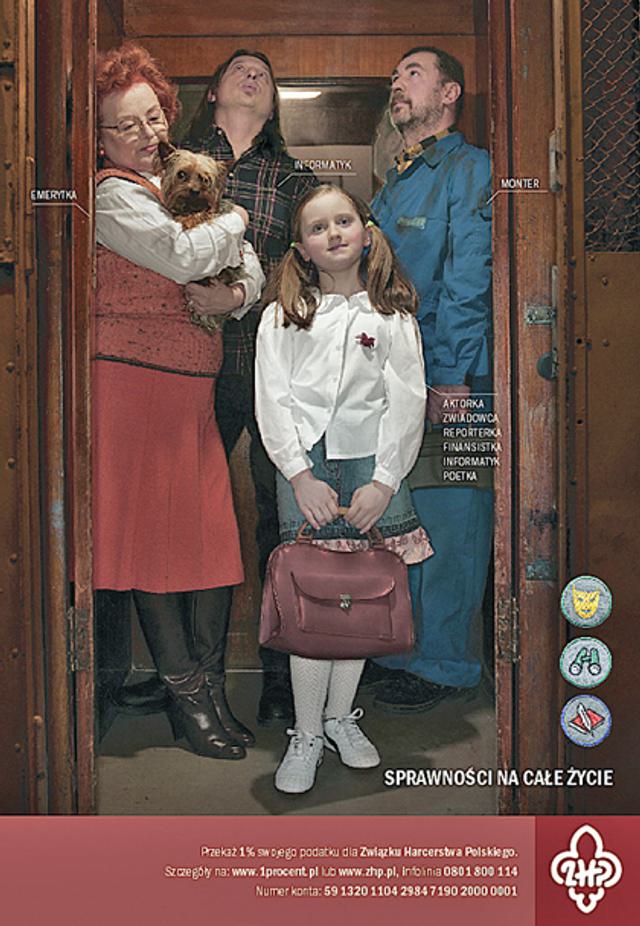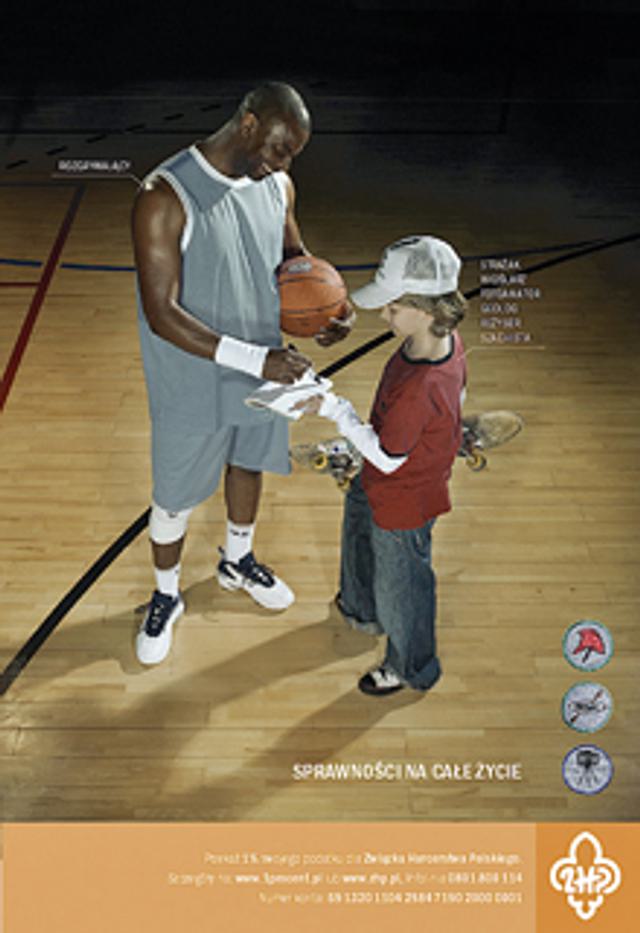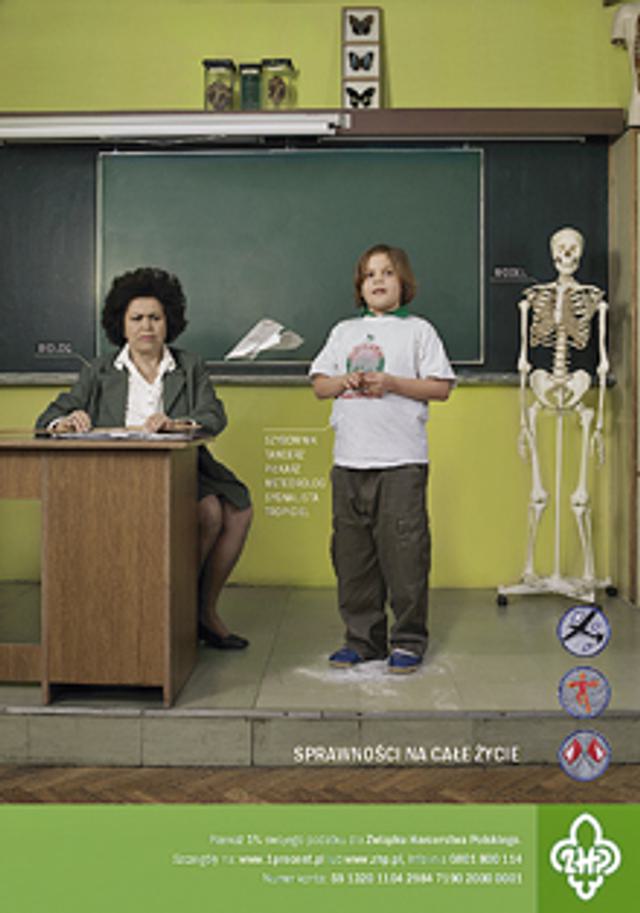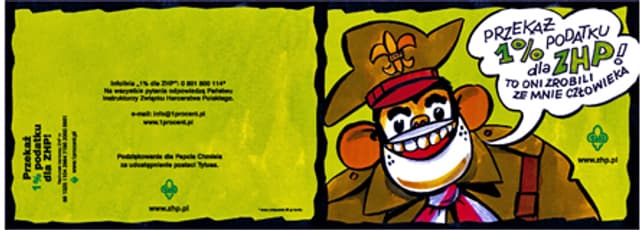Polish Scouting Association ‘Proficiency for life’ campaign
- Exhibited by
- CSDF Hungary.
- Added
- June 11, 2010
- Medium of Communication
- Online, posters, radio
- Target Audience
- Individuals, planned gift, corporations
- Type of Charity
- Public / society benefit
- Country of Origin
- Poland
- Date of first appearance
- 2005.
SOFII’s view
This is a vigorous, imaginative campaign from Poland aimed at persuading Polish citizens to give the one per cent of their personal income tax, which the law allows them to donate to a charitable organisation, to the Scout movement. Though perhaps more media might be used in this campaign it is still a worthy, innovative attempt across several media to increase awareness in Poland of the many useful initiatives that the Scouts provide as they prepare young people for service and, hopefully, enable them to have a good time while doing so.
Creator / originator
The Polish Scouting Association working with PR agency McCann Ericsson and Media ZET media corporation
Summary / objectives
The Polish Scouting Association (ZHP) is the biggest Polish youth organisation, with a long tradition in the country. The main idea of their campaign was to show Polish citizens how important it is to donate one per cent of their personal income tax (PIT) to a non-governmental organisation. By cooperating effectively with other organisations, the Association also wanted to be seen as a modern, efficient and significant organisation.
Background
Every taxpayer in Poland is entitled to choose a non-governmental organisation that can benefit from one per cent of his or her personal income tax. The Scout Association used the opportunity of launching a campaign asking for this contribution to also spread their message to all parts of Polish society, thereby repositioning the Scouts in the Polish voluntary sector.
Details
Costs are not more than for a normal professionally managed telephone fundraising campaign.
Costs
The campaign budget was €36,100, less than 10 per cent of what was raised.
Results
Primary results:
Income: €363 000. This result shows an increase of 40 per cent in the funds gathered from the one per cent PIT donated to the organisation – which put them in first place among youth NGOs in Poland and third among all organisations.
Secondary/additional results:
- There were about 200 entries a day at www.1procent.pl.
- The structure of the campaign enabled local groups to get involved in the process and collect money directly for their own needs.
- Due to the one per cent for ZHP radio spot the organisation was recognised by the ‘Media and Marketing Poland’ magazine and received an award, the HIT award.
Merits
The Association’s financial result is really outstanding compared to the competition. It also managed to enable local branches to organise their own campaign, by providing them with ready-made materials.The creative idea was great, a good example of using images of popular culture.
Other relevant information
Elements of the campaign were as follows:
- Preparing promotional materials.
- Media and internet appearances.
- Billboards and city lights.
- Establishing cooperation with McCann Erickson.
- Educational campaign on the radio and the internet.
- Educational campaign organised by the scout teams and their units.
- Info- line and internet consultancy.
The info-line was the main source of information not only about one per cent but more generally about the Polish Scouting and Guiding Association. All staff from the national headquarters operating this info-line were trained by specialists on the issues of one per cent tax and on telemarketing.
Websites, eg www.1procent.pl (for taxpayers) and www.sponsoring.zhp.pl (for district commissioners) were of key importance for information updating. These websites presented methodology, materials and useful ideas for local societies as well as materials produced by the PR agency. Advertisements in the media provided information on the results.
Follow-up of the project
- Case study (exploring a topic in depth through group discussion concerning the best solutions and the best practices at all levels).
- Interviews with participants of the project (children and young people, leaders, adults, parents).
- Observations.
- Documentation review.
- Focus group.
Final notes
Adapted from CSDF’s 2006 publication Mission Possible.
 View original image
View original image


 View original image
View original image
Also in Categories
-
-
















